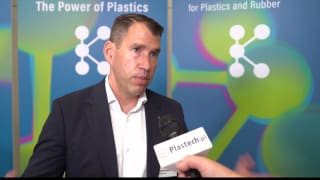Despite economic and commercial uncertainties across various geographical regions, which worsened in the last quarter of the year, the performance of the sector remained positive, driven primarily by exports. Said exports saw a remarkable growth of nearly eleven percentage points compared to 2022. Italian manufacturers of plastic and rubber machinery experienced particularly strong sales in key markets such as the European Union (+9% over 2022), North America (+18%), and Asia (+8%, with the Middle East up by 50% and the Far East down by 1%). Though with smaller shares, South America also registered a 23% increase.
In the top ten export markets for Italian manufacturers, notably positive results have been observed in France, Spain, and Romania, as well as in Mexico and Turkey. Only Poland and India showed declines, despite both having enjoyed very favourable trends in previous periods.
The comparison with Germany and China - Italy’s two main competitors – reveals that their respective exports of machinery for plastics and rubber registered increases of 7.5% and 12.9% compared to 2022. Even when looking at the past decade, Italy’s performance lies somewhere between that of its two primary competitors, totalling an average of 3.5%, compared to Germany’s 2.9% and China’s 9.0%.
However, it is undeniable that the commercial pressure from China has been steadily intensifying over the past decade across all major geographical regions. At ChinaPlast, held from 23 to 26 April, it was all the more evident that Chinese technology is advancing at a quick pace. This serves as an impetus for Italy to leverage its unique ability to develop increasingly innovative, flexible, and naturally performing solutions - also in terms of energy efficiency.
The 2023 financial report for Amaplast member companies is in line with that of the entire sector: the association noted a revenue growth of 2.4% – not as strong as the one registered over the previous two years, but significant still. Additionally, there was a modest increase (1.1%) in the workforce.

While core-machinery (primary processing equipment) production has registered a slowdown, the production of auxiliary and downstream equipment, components, and moulds has continued to show a significant increase.
As mentioned, the trend among the sector - mirroring that of the industry generally and the capital goods sector – cooled down over the final months of 2023 but more encouraging signs were observed in April and May. Nevertheless, forecasts for the upcoming months are rather cautious: many companies will find it challenging to achieve further growth, and a period of stabilization and transition is to be expected. Domestic demand, in particular, may remain weak due to uncertainties surrounding the effective implementation of Transizione 5.0 measures.
President Margaglione expressed his thoughts on the matter: “A justified sense of concern has spread among entrepreneurs of the sector, but I for one am optimistic: not because it is philosophically better to speak of the good rather than the bad, nor because of that corporate mindset that sometimes tells us to conceal negativity, but because, despite our flaws and shortcomings, we never fail to showcase truly exceptional ingenuity thanks to our unparalleled creativity, our vigorous entrepreneurship, and an extremely diverse and dynamic business fabric.”



